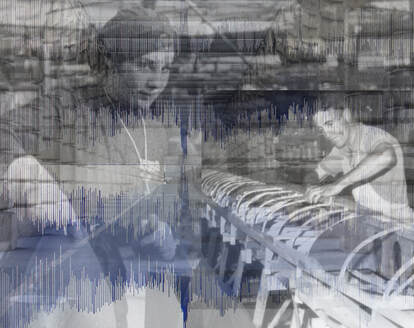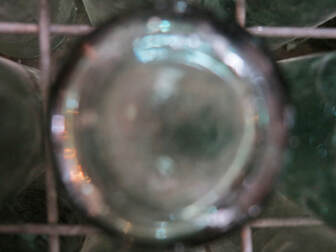Born For It
a site-sensitive eight-channel audio installation
From July 2018 to June 2019 Leona was artist-in-residence at The Museum of Bath at Work, Bath, Somerset. She immersed herself in the oral history archives, a treasure trove of recordings made in the late 1980s which covered periods of time from the early 1900s up to the 1980s. The individuals who had been recorded demonstrated their vitality in their voices as they talked about work and leisure, and many more deserved to be heard again than was possible in the resulting sound installation, Born For It.
|
The two-hour long fixed media work played on a loop through eight channels, reconfiguring the whole of the main gallery of the Museum into an immersive listening space. Incorporating snatches of the oral histories, sounds recorded in the building itself, and with touches of ASMR (Autonomous Sensory Meridian Response), the Museum’s ambient sounds blended with Born For It, visitors' voices blended with recorded speech, fusing in a reminder that we are all born for work in a world that is constantly in flux, with the potential for transformation, connectedness and collaboration. |
|
Museums are usually places that slow us down in order to invite reflection, and silence is often considered necessary for this. However, the Museum of Bath at Work offers a different experience, as it’s a place where objects tumble amongst each other, a place where heavy machinery is still allowed to grrroannnnCREEEAKRRRumble into life. Born For It places sound centre-stage by re-sounding it, acknowledging it as proof of the creativity inherent in human labour, both paid and unpaid, as work and as leisure, and also as evidence of effort within shop, pop factory, industrial workshops, now re-housed in a real tennis court building.
The work seeks to bring to the fore the less tangible, as not just artefacts are held within the Museum’s walls. There are memories, associations, relationships, dissonances, connections and disconnects. Born For It is a work that borrows from what’s around it, mingling tangible and intangible, so that everyone can hear something of themselves, and perhaps hear it differently. These observations on working lives remain relevant to our fractured times, with their acknowledgements of rewards and pain. How much does actually change?
Time refolds when listening to archive recordings, and the listener is placed in the moment of decades ago as people speak with no expectation of being interrupted, talked over, silenced; listening becomes dominant. Audio histories bring distant events close because of the manner of speaking. Individual nuances of accent and expression communicate what words alone cannot. What is heard is embodied sound as vital and unique individuals lean forward into fluency, disappear momentarily into themselves, grapple for words that can never fully describe, allowing the listener a relationship with something much more hidden and profound than information giving.
Voice ties language to the body, but belongs to neither. Normally, human voice is only a part of communication, accompanied by the silent languages of touch, gesture and facial expression. When these other elements are removed voice alone becomes the focus, harbouring the immediacy and full richness of humanity. Is it heard more vividly, with new significance, because its origin can’t be visualised?
|
|
Space is left for Imagination, a chance to create enriched worlds, forming relationships with people, places and situations never personally experienced. Placing vocalising in a space where it’s unexpected uncovers another realm, one of echoes of echoesof echoes… Individualised meaning emerges from always-fluid sounds montaged onto the consciousness of the listener. |
|
Listening is different from hearing. It’s a more active, complex, multi-layered, reflective experience of which hearing is only a part. Listening is being fully present in the world around, alert for something beyond literal meaning, and can increase receptiveness and a wish for plurality of voices. |
Born For It (two channel extract of 2 hour soundscape) listen with headphones if possible








